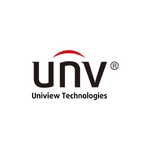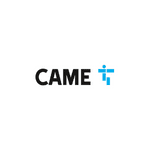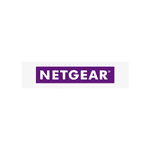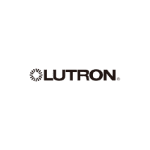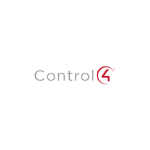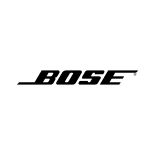EDUCATION SOLUTIONS
The education system is constantly evolving as new technologies are developed and we are dedicated to helping education evolve in the 21st century. We are doing this by providing resources and support to educators who are looking to use technology in their classrooms, and we are always looking for new ways to improve the education system
Access Control System
An access control system is a type of security system that is used to control and monitor access to a particular area or facility. These systems can be used in the education industry to control access to buildings and grounds, enhance security, improve safety, and comply with safety regulations. An access control system can provide a secure means of granting or denying access to a particular area or facility, and can be used to restrict access to certain areas, such as laboratories or research facilities, to authorized personnel only. An access control system can be an important tool for meeting safety regulations and ensuring the safety of students, staff, and visitors in the education industry. Overall, an access control system can be a valuable tool for enhancing security and improving safety in a variety of settings.
Boom Barrier
Automatic boom barrier is a type of physical security barrier that is used to control vehicle access to a particular area. In the education industry, boom barriers can be used to control the flow of vehicles into and out of a school or university campus, enhance security, improve traffic flow, and comply with safety regulations. Boom barriers can provide a physical barrier that can deter unauthorized vehicle access and help to prevent crimes such as vandalism or theft. These barriers can also help to improve traffic flow by allowing authorized vehicles to enter and exit the campus efficiently, while preventing unauthorized vehicles from entering. Boom barriers can be an important tool for meeting safety regulations and ensuring the safety of students, staff, and visitors in the education industry.
IP Video Surveillance System / CCTV
An IP video surveillance system, also known as a CCTV (closed-circuit television) system, is a type of video surveillance system that uses IP cameras to capture and transmit video over a network. These systems can be used to monitor and secure buildings and grounds, improve safety, assist with investigations, and enhance emergency response in the education industry.
Conference Room Audio & Video Systems
Conference room audio and video systems are a valuable tool for the education industry, as they can help to improve communication, enhance multimedia content sharing, provide greater flexibility, and enhance collaboration. These systems can be used to facilitate meetings, presentations, and other events in conference rooms, and can allow participants to hear and see each other clearly, share multimedia content, record events, and facilitate the participation of remote attendees. Conference room audio and video systems can help to make meetings and events more productive and efficient, and can facilitate greater collaboration and engagement among attendees. Overall, conference room audio and video systems are an important tool for the education industry, as they can help to enhance communication, content sharing, and collaboration in a variety of settings.
Emergency Exit Signages
Emergency exit signages are an essential safety feature in the education industry, as they help to ensure that building occupants are aware of the location of emergency exits and can evacuate safely in the event of an emergency. These signages are typically located near exits or along evacuation routes, and can include arrows or other visual indicators to show the direction of the nearest emergency exit. Emergency exit signages can also be used to comply with safety regulations and ensure the safety of students, staff, and visitors. The use of emergency exit signages can be particularly important in educational institutions, as these buildings often have a high occupancy rate and may be at an increased risk for emergencies. By clearly marking the location of emergency exits and providing directions for evacuation, emergency exit signages can help to minimize the risk of injury and property damage in the event of an emergency
Addressable Fire Detection & Alarm System
An addressable fire detection and alarm system is a type of fire safety system that is designed to detect the presence of fire and to alert building occupants and emergency responders. These systems can be used in the education industry to detect and alert in the event of a fire, identify the specific location of the fire, monitor and control the response to a fire, and provide documentation of the fire event. An addressable system can be a valuable tool for ensuring the safety of students, staff, and visitors in the education industry by providing early warning in the event of a fire and allowing for a rapid and effective response. This can help to minimize the risk of injury and property damage in the event of a fire.
Control Panel
Our fire alarm control panels are the heart of a reliable and scalable fire and life-safety communications system. They are intelligent, configurable, and expandable, allowing them to fulfill a wide range of applications. We also provide low-cost ways to maintain or expand your capabilities, such as product features, system design, training, risk assessments, and ongoing maintenance.
Fire Alarm System
Our solutions are affordable and simple to use, with flexible wire design and self-testing capabilities. Whether you require notice via SMS, horns, strobes, or speakers, our advanced addressable notification systems can assist in making protecting people, property, and business operations more reliable and cost-effective.
Fire Proof Doors
Fire proof doors are an important safety feature in the education industry, as they are designed to resist the spread of fire and smoke and provide a safe and effective means of egress in the event of a fire. These doors can be used in a variety of settings, including school entrances, hallways and classrooms, common areas such as cafeterias and libraries, and exit doors. The use of fire proof doors can help to reduce the risk of fire and smoke spread, improve safety, and provide peace of mind for students, staff, and visitors. Fire proof doors can also help educational institutions to comply with fire safety codes and regulations. Overall, the use of fire proof doors in the education industry is an essential safety measure that can help to protect students, staff, and visitors in the event of a fire.
Automatic Sliding Glass Door
Automatic sliding glass doors are a type of door that is activated by sensors or buttons and can open and close automatically. These doors can be used in a variety of settings within the education industry, including school entrances, hallways and classrooms, cafeterias and other common areas, and outdoor areas such as courtyards. Automatic sliding glass doors can provide convenience and accessibility for students, staff, and visitors, and can help to control the flow of foot traffic and reduce noise levels. These doors can also be used to enclose outdoor areas, providing a weather-resistant barrier that can be opened and closed as needed. Overall, automatic sliding glass doors can be a useful tool for improving accessibility, convenience, and control within the education industry.
IP-PBX System With Call Center Software
An IP-PBX (Private Branch Exchange) system with call center software is a communication system that can be used to manage phone calls and other forms of communication within an organization. In the education industry, this system can be used to route and manage phone calls to the appropriate extension or department, and to provide additional features such as call queues and hold music. The IP-PBX system can also be used to facilitate communication through various channels, including voice, video, and messaging. This can help to improve communication between teachers, students, and other stakeholders. The call center software can be used to support customer service operations, such as handling inquiries from parents, students, and other stakeholders. Additionally, the call center software can be used to track and analyze data on call volume, call duration, and other metrics, which can be used to improve the efficiency and effectiveness of communication within the organization. Overall, an IP-PBX system with call center software can be a valuable tool for managing communication and supporting customer service in the education industry.
IT & Networking
Information technology (IT) and networking are crucial to the education industry, as they support teaching and learning, manage administrative tasks, and facilitate communication and collaboration. Educational institutions use a variety of IT tools and resources, such as learning management systems, educational software, and mobile devices, to deliver course materials and assess student learning. Network infrastructure is also important for connecting devices and providing internet access, while cloud computing helps to store and manage data and deliver resources to users. Additionally, many educational institutions are using specialized software such as simulation and visualization tools to support teaching and learning in various subject areas. Overall, IT and networking are essential for the operations and goals of the education industry.
Intelligent and Automated Network Management
AMF can manage networks that cover multiple locations and time zones, allowing it to support multi-site businesses. AMF is simple to use, whether your network covers the campus or the continent. With plug-and-play functionality, you can support local and distant business growth. Extend the advantages of AMF network intelligence across thousands of network switches, firewalls, and third-party devices with an AMF Controller.
Switches
The SwitchBlade and xSeries switches, with the AlliedWare PlusTM operating system, provide scalable and adaptable switching solutions for today’s rapidly changing business and service provider networks from the edge to the core. These AMF-enabled switches save network operating costs by automating and simplifying many day-to-day tasks. We provide enterprise data center switches, extended temperature products for industries, and unmanaged WebSmart switches for small and medium businesses.
INTERACTIVE WHITEBOARD
Interactive whiteboards are a useful tool for education because they provide an engaging and interactive learning experience for students. With an interactive whiteboard, teachers can present lessons using a variety of multimedia resources such as videos, images, and websites. This can help to keep students motivated and engaged in the learning process. Interactive whiteboards can also facilitate collaboration between students, allowing them to work together on projects and activities. In addition, research has shown that students who use interactive whiteboards tend to have improved test scores and grades compared to those who do not. Interactive whiteboards also allow teachers to differentiate instruction and provide individualized support for students. Overall, interactive whiteboards can help to improve student learning and achievement in the classroom.
INTERACTIVE PODIUMS
An interactive podium is a type of lectern that is equipped with technology such as a computer, display, and audio system. These podiums can be used in the education industry to enhance lectures and presentations, improve engagement, facilitate collaboration, and enhance accessibility. Interactive podiums allow presenters to display multimedia content such as slides, videos, and documents, and to interact with the audience using tools such as a microphone or whiteboard. These podiums can also be used to facilitate collaboration by allowing multiple users to access and share content on the podium's computer. Interactive podiums can also be equipped with features such as a hearing loop or closed captioning, which can enhance accessibility for attendees with disabilities. Overall, interactive podiums can be a valuable tool for enhancing lectures, presentations, and collaboration in the education industry.
DIGITAL VISUALIZERS
A digital visualizer is a device used to capture and display images and text from physical objects or documents. In the education industry, it can be used to enhance lectures and presentations, improve engagement, facilitate collaboration, and enhance accessibility. Digital visualizers allow presenters to display and share physical objects or documents, interact with the audience, and encourage participation. They can also facilitate collaboration by allowing multiple users to access and share content, and can be equipped with features such as a hearing loop or closed captioning to enhance accessibility. Overall, digital visualizers are a valuable tool for enhancing lectures, presentations, and collaboration in the education industry.
WE GROW WITH


